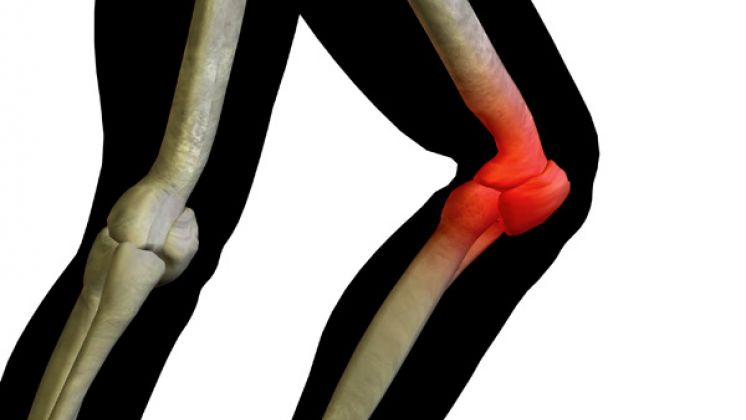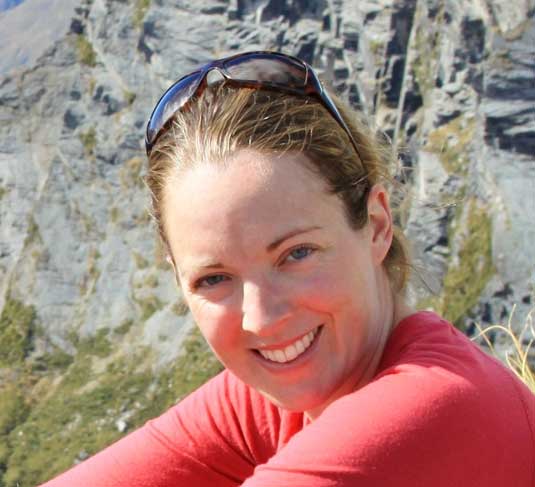How To Treat Knee Injuries
Physiotherapist Lucy Macdonald explains some of the most common knee injuries and how to treat them

How The Knee Works
The knee is a modified hinge joint made up of two parts: the patellofemoral joint, which is where the kneecap (patella) sits in a groove in the thigh bone (femur); and the tibiofemoral joint, which is where the femur is joined to the lower leg (tibia) by a number of ligaments and soft tissues.
The quadriceps and hamstrings are the muscles that straighten and bend the knee, and an imbalance between or within these muscle groups causes the knee to work inefficiently. This can result in excessive or incorrect movements within the joints, which can damage the joint’s structure.
However, the vast majority of non-traumatic knee injuries are caused by weakness, tightness and poor co-ordination of the muscles and joints of the ankle, foot, hip and lower back. A good physiotherapist will never treat a knee injury without addressing the alignment of the whole leg and back. They will also analyse the movements of the whole body by, for example, assessing your running. Here are the common knee injuries, how to avoid them and how to correct them. It’s essential to see a physiotherapist before doing any of the exercises recommended.
Patellofemoral joint dysfunction
What it feels like: Pain, clicking and/or stiffness under or around your kneecap, often worse on hills or stairs, comes on gradually.
Most common cause: The inner part of the quads (vastus medialis oblique or VMO) being less active than the outer part. As a result the kneecap is pulled outwards so it rubs against the bone, irritating the structures around the kneecap. This imbalance in the quads is often a result of weakness of muscles in the hip and foot which put the hip and foot in the wrong position so the knee in out of alignment, preventing the quads from working effectively.
Home treatment: To activate your VMO, sit with your foot on the floor and knee as straight as possible. Feel the muscle on the inside of the knee just above the kneecap – this is the VMO. Contract this muscle by pushing down through your heel – you’ll feel it contract under your fingers. Repeat this until you have learned the sensation of activating this muscle. Don’t do this move in isolation – pair it with the ‘wall and ball’ to train efficient leg alignment and strengthen the VMO. It also strengthens your gluteus medius and stabilises the hip.
ITB friction syndrome
What it feels like: Sharp pain and/or stiffness at the outside of the knee, often worse when going downhill and down stairs, tender to touch, comes on gradually, most common in runners
Get the Coach Newsletter
Sign up for workout ideas, training advice, reviews of the latest gear and more.
Most common cause: The iliotibial band (ITB), which runs down the outside of the thigh, becomes tight and rubs against the outside of the knee, causing inflammation and pain. This is normally due to poor alignment of the hip, which results in over-activity of the tensor fasciae latae (TFL)‚ the hip muscle that the ITB connects to.
Home treatment: Foot posture can have a big effect on this case so try adjusting your footwear and/or wearing insoles.
Patella tendinopathy
What it feels like: Pain in the lower middle of the kneecap, intensely tender to touch or kneel on.
Most common cause: Increasing your training time, speed or resistance too quickly, particularly after a period of reduced exercise. By the time you feel the pain, the damage will have been going on for some time and probably changed the structure of the tendon.
Home treatment: Stand on a step holding something for balance (you should wear trainers for this). To treat a left knee tendinopathy lift your right leg and slowly lower yourself off the step to touch your right toe on the floor below. With the left knee still bent, put the right foot back onto the step. Return to the start position by pushing your weight through the right leg. Do 30 reps every day. Don’t do this move if the pain came on suddenly – make sure you see a physio instead.
It’s also a good idea to strengthen the calf muscles with calf raises. Stand on both legs and go up onto tiptoes, making sure your heels don’t twist inwards and more weight goes through your big toe than the outside of your foot.

Lucy Macdonald has been a sports physiotherapist since 2004, with experience treating professional and amateur sports people including members of the GB ski and powerlifting teams.
